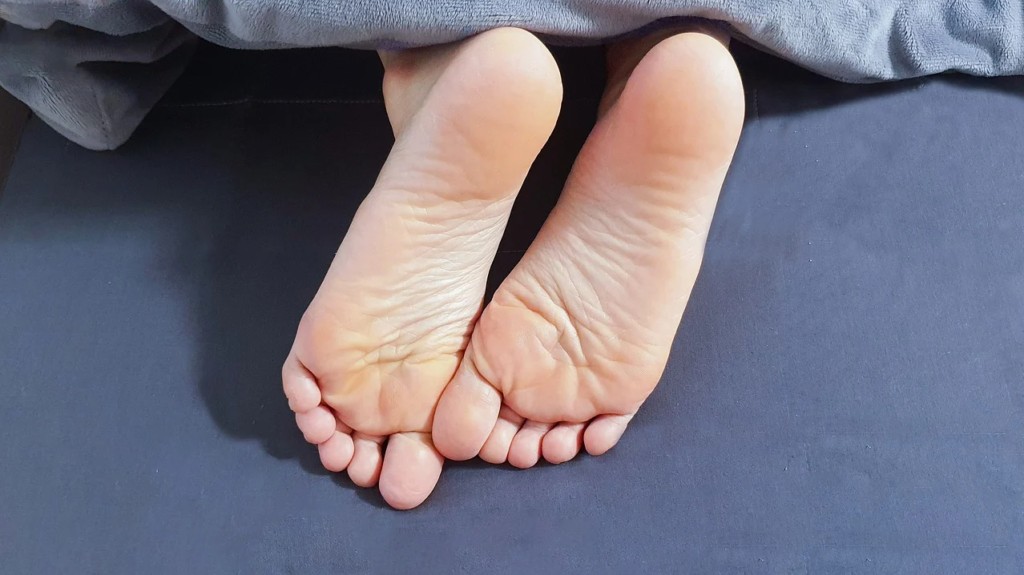Peeling skin on your feet is a common issue that many people experience. Whether it’s a minor annoyance after a bit too much sun or a persistent problem, understanding why your feet are peeling and what you can do about it is important. Let’s explore the common causes and effective home treatments for peeling feet.
Symptoms of Peeling Skin on Feet
Recognizing the symptoms is the first step to addressing peeling feet. Often, you’ll notice dry, cracked, or flaky skin, particularly on the soles, heels, and around your toes. This can manifest as:
- Cracked skin, especially around the heels.
- Peeling skin patches on the balls of your feet or toes.
- Dry, rough, and hardened skin.
- In some cases, redness, itching, or even pain may accompany the peeling, depending on the underlying cause.
 Bottom of feet
Bottom of feet
Common Causes of Peeling Skin on Feet
Several factors can contribute to skin peeling on your feet. Identifying the cause is crucial for effective treatment. Here are some of the most frequent culprits:
-
Athlete’s Foot (Tinea Pedis): This fungal infection thrives in moist environments like sweaty shoes and socks. Athlete’s foot is highly contagious and often appears between the toes and on the soles, causing itching, burning, and peeling skin. Excessive sweating creates an ideal breeding ground for this fungus.
-
Eczema (Atopic Dermatitis): Eczema is a chronic skin condition that can cause itchy, red rashes anywhere on the body, including the feet. It’s often linked to genetics and allergies. When eczema affects the feet, it can lead to dry, peeling skin, along with intense itching and discomfort.
-
Sunburn: Just like any other part of your body, your feet can get sunburned, especially the tops and soles if exposed to direct sunlight or tanning beds. Sunburn damage initially presents as redness and pain, but as the skin heals, it commonly peels as the damaged outer layers shed.
-
Psoriasis: This autoimmune condition causes skin cells to multiply too quickly, resulting in thick, scaly patches. Psoriasis can affect the feet, particularly the soles and ankles, leading to peeling, cracking, and pain. It’s a chronic condition requiring ongoing management.
-
Dry Skin and Dehydration: Simple dehydration or naturally dry skin can also cause your feet to peel. When your body lacks sufficient moisture, your skin can become dry and flaky all over, including your feet. Genetics can also play a role in predisposing you to dry skin.
Effective At-Home Treatments for Peeling Feet
For many cases of peeling feet, home care can provide significant relief and promote healing. Here are some effective at-home treatments you can try:
-
Gentle Exfoliation with a Foot File: After soaking your feet in warm water for about 20 minutes to soften the skin, gently use a foot file to remove dead, peeling skin. Use the rough side in a downward motion to carefully exfoliate, followed by the smoother side to refine the skin. Avoid over-exfoliating, which can irritate the skin further.
-
Daily Moisturizing: Applying a rich moisturizer daily, especially after bathing or showering, is crucial for hydrating your feet and preventing peeling. Look for moisturizers containing ingredients like urea, lactic acid, or hyaluronic acid, which help to attract and retain moisture in the skin.
-
Over-the-Counter Antifungal Treatments: If you suspect athlete’s foot, over-the-counter antifungal creams, sprays, or powders containing ingredients like clotrimazole or miconazole can be effective. Follow the product instructions and continue treatment for the recommended duration, even if symptoms improve, to fully eradicate the fungal infection.
-
Let Your Feet Breathe: Allowing your feet to air out, especially after exercise or wearing enclosed shoes for extended periods, can help reduce moisture buildup. Whenever possible, wear breathable shoes and socks made of natural fibers like cotton. Going barefoot at home can also be beneficial.
When to See a Podiatrist
While home treatments are often effective, there are times when professional help is necessary. Consult a podiatrist if:
- Your peeling feet are severe or don’t improve with home treatments.
- You suspect a fungal infection that isn’t responding to over-the-counter medications.
- You experience pain, swelling, or signs of infection, such as pus or increased redness.
- You have an underlying medical condition like diabetes, which can complicate foot problems.
A podiatrist can accurately diagnose the cause of your peeling feet and recommend the most appropriate treatment plan, which may include prescription medications or specialized foot care. Don’t hesitate to seek professional help to ensure healthy, comfortable feet.
